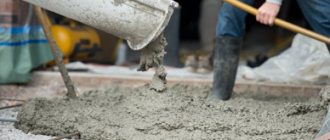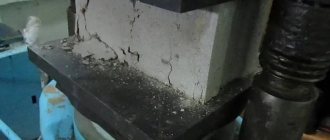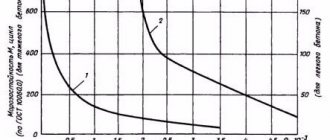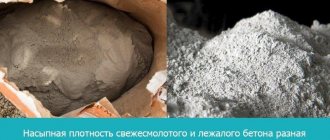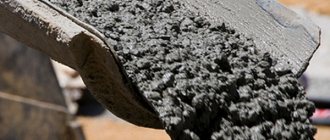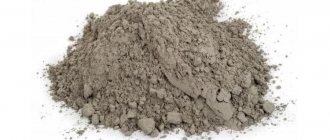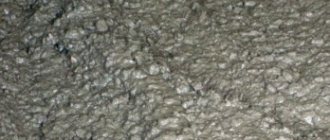The influence of youth slang
In principle, there is nothing wrong with using slang when communication in it does not go beyond the boundaries and the person understands the difference between commonly used colloquial speech and this humorous, coded (often temporary) language. But if, due to non-acceptance of generally accepted norms in adolescence, a gross rejection of the “normal” occurs, then this is already a problem.
The thing is that all our thoughts are closely connected with the word, and not with the image, like in animals. Therefore, using slang expressions, a teenager begins not only to speak, but also to think in it. As a result, slang seeps into all areas of his activity and takes root in such a way that sometimes he himself needs translation from “normal” to “his” language.
It will be very difficult to get rid of slang later. But it is quite achievable. And this will require a lot of conscious effort.
In fact
The older the child became, the more clearly he understood that this mystical story had such a name for a reason. For an adult, “pots” in Hebrew is a kind of abusive word, quite often used. It can have two meanings. The first is negative, derogatory, and the second is more humorous, positive and has the task of teasing and bullying rather than insulting.
Many adults will say that “pots” in Hebrew is the male genital organ. There are a large number of analogues to it in the Russian language. But in fact, historical references indicate that it is more likely a canine genital organ than a human one. Often, when scolding someone, a Jew will say: “Oh, you dirty ass!” And all the same, this will be said not with anger, not with a desire to offend or humiliate, but with laughter, with a joke or mockery.
Preparation
Preparing concrete by hand
To prepare 1 m3 of sulfate-resistant concrete (M300) with your own hands, you need to have the following set of materials:
- sulfate-resistant Portland cement - 360 kg;
- river sand - 850 kg;
- crushed granite stone - 1100 kg;
- water - 190 l;
- if necessary, add 5–10 kg.
Depending on the chosen preparation method and the required volume of material, you will need the following tools:
| Name | Description |
| Concrete mixer | The first method is mixing in a concrete mixer. |
| Concrete box | The second method is to knead by hand with a shovel or mixer. |
| Mixer | The third method is for small volumes |
| Bucket | Bucket for water and measuring proportions of materials |
| Shovel | Shovel for loading materials, as well as for manual kneading |
Manufacturing instructions and work order:
- Turn on the concrete mixer.
- Fill with water.
- Add cement and mix thoroughly.
- We fill in the estimated amount of sand and crushed stone.
- Mix for 10–15 minutes and pour into the formwork.
As you can see, sulfate-resistant concrete is not difficult. In its composition and method of preparation, it is no different from ordinary concrete. You can see this for yourself by watching the video in this article.
Slang
Slang (from the English slang) are new names for familiar words or sets of words that are used by different kinds of people in different fields. In general, slang is non-standard vocabulary that unites people of the same profession and/or company.
Nowadays, many of the slang expressions have firmly established themselves in our literary language and are actively used by almost all groups of people. For example, “write a cheat sheet” (a hint, a reminder), “make a fuss” (tell everyone, make it public), “fail an interview” (receive a refusal at an interview, not get a job).
The main difference between slang, for example, and colloquial expressions, is its use in their colloquial speech by educated people, people of similar professions, ages, etc. Often it is slang that determines a person’s membership in a certain group (for example, ZY - computer slang, babki - criminal jargon). In addition, in different group circles, slang words having the same sound mean completely different things (for example, CNC - SEO, Internet and CNC - factory machine).
In the Russian language, general slang is also actively used, for example, bummer, showdown, grandma, party, cop, zadolbat, bullshit. These are words borrowed mainly from youth or criminal slang, but which have become commonly used and understandable to almost everyone.
Sulfate-resistant cement
- Concrete, mortar, cement and additives 28045
- Cement 3763
- Concrete 14238
- Aerated concrete 372
- Sand concrete 559
- Expanded clay concrete 502
Additives for concrete 4773
show all
- 10
Brand
- 6
- Eurocement 1
- Leader 1
- Sebryakovcement 1
Composition (Main component)
- 13
Brand
- M500 8
- M200 1
- M400 1
Weight
- 6
- 25 kg 1
Supply
- 6
Color
- gray 3
Hardening speed
- 5
- fast-hardening 1
Manufacturer country
- Russia 4
Delivery
- 5
- Delivery by courier 2
- 5
- 7
Payment
- 7
- 5
- Cash on delivery 2
Availability
- 13
To clarify prices for goods and services in the Sulfate-resistant cement section or to buy them, contact the supplier.
By rating By price By alphabetical With photo List Gallery Products and services Companies
Demand
Products and services in RUSSIA 13 products and services from 1248 suppliers
- from 340 rub./bag
- In stock
Wholesale / Retail
- 09.01.19
according to GOST 22266-94. Factory packaging guarantees the quality and exact weight of the bag’s contents. Free shipping for wholesale quantities
Submit order Add to cart
- Antares 7 Online Rostov-on-Don
- +7 show number
- Save supplier
- 1 review
- 3 more supplier products
- In stock
Wholesale / Retail
Sulfate-resistant Portland cement grade 500 with min. additives. SSPTs 500-D20. GOST 22266-94, 30515-97. JSC NOVOROSCEMENT, Novorossiysk city. Packaging 50 kg.
Submit order Add to cart
- StroyMaterials with Delivery 5 Online Rostov-on-Don
- +7 show number
- Save supplier
- 3 reviews
- 1 more product from the supplier
- In stock
Wholesale / Retail
GOST 22266-2013, GOST 30515-2013 Full name: sulfate-resistant Portland cement, strength class 32.5, quick-hardening. . Is used for
Submit order Add to cart
- Jam 1 Online Krasnoyarsk
- +7 show number
- Save supplier
- Add a review
- In stock
Wholesale / Retail
Working with us, you can be sure of the high quality of the purchased goods and stability of supply. We are committed to mutually beneficial cooperation!
Submit order Add to cart
- Andreev A.M. 5 Online Taganrog
- +7 show number
- Save supplier
- Add a review
- In stock
09.01.19
It is used in the production of concrete for reinforced concrete structures with higher corrosion resistance in waters saturated with sulfates, as well as those exposed to constant periodic exposure to moisture, its freezing and thawing.
Submit order Add to cart
- SpetsTorg Online Moscow
- +7 show number
- Save supplier
- Add a review
- In stock
Wholesale / Retail
At the WALL CENTER you will find only high-quality products. We offer the best prices in Taganrog. Favorable purchasing conditions and constant discounts at the WALL CENTER.
Submit order Add to cart
- WALL CENTER 5 Online Taganrog
- +7 show number
- Save supplier
- Add a review
- 1 more product from the supplier
- In stock
10.01.19
Supply of high-quality Portland cement throughout the Crimea.
Submit order Add to cart
- Tstroy.com.ua Online Simferopol
- Save supplier
- Add a review
- In stock
10.01.19
Prompt delivery of building materials at wholesale prices.
Submit order Add to cart
- Tkachenko Online Simferopol
- Save supplier
- Add a review
- In stock
Wholesale / Retail
Sulfate-resistant Portland cement grade 500 with min. additives. SSPTs 500-D20. GOST 22266-94, 30515-97. Manufactured by Sebryakovcement OJSC, Volgograd. Packaging 50 kg.
Submit order Add to cart
- StroyMaterials with Delivery 5 Online Rostov-on-Don
- +7 show number
- Save supplier
- 3 reviews
- 1 more product from the supplier
- In stock
Wholesale / Retail
Sulfate resistant. according to GOST 22266-94. Factory packaging guarantees the quality and exact weight of the bag’s contents. Free shipping for wholesale quantities. Shipment from a warehouse in Rostov-on-Don.
Submit order Add to cart
- Antares 7 Online Rostov-on-Don
- +7 show number
- Save supplier
- 1 review
- 3 more supplier products
- In stock
Wholesale / Retail
according to GOST 22266-94. Factory packaging guarantees the quality and exact weight of the bag’s contents. Free shipping for wholesale quantities
Submit order Add to cart
- Antares 7 Online Rostov-on-Don
- +7 show number
- Save supplier
- 1 review
- 3 more supplier products
- In stock
Wholesale / Retail
Sulfate resistant. according to GOST 22266-94. Factory packaging guarantees the quality and exact weight of the bag’s contents. Free shipping for wholesale quantities. Shipment in batches of multiples of 30 bags (1 pallet).
Submit order Add to cart
- Antares 7 Online Rostov-on-Don
- +7 show number
- Save supplier
- 1 review
- 3 more supplier products
- In stock
Wholesale / Retail
At the WALL CENTER you will find only high-quality products. We offer the best prices in Taganrog. Favorable purchasing conditions and constant discounts at the WALL CENTER.
Submit order Add to cart
- WALL CENTER 5 Online Taganrog
- +7 show number
- Save supplier
- Add a review
- 1 more product from the supplier
Place a request
Didn't find the product you're looking for?
Popular posts
- Chair for dressing table Chairs for dressing tables in Moscow - 189 Products Company from Moscow, delivery 29643 a In…
- Silicone sanitary sealant Silicone sanitary sealant white in Moscow - 1491 products Company from Moscow, delivery (tomorrow) 140...
- Shelf in the hallway Currently, there are a huge number of different options for shelves in the hallway, and this is directly ...
- Insulation of the floor in a wooden Insulation of the floor in a wooden house from below: materials and installation technology SHARE ON SOCIAL NETWORKS One of the common…
Variants of using the word
The word chill can be used by young people to refer to various activities.
It can be:
- passive actions that provide the opportunity to relax and get high: spending time doing your favorite activity slowly, tastefully, without stress, enjoying and relaxing;
- relaxation at home: you can watch an interesting movie while lying on the couch, or play a console all day;
- doing nothing at home, ignoring household chores - here chill has a negative connotation, since a person does not do anything useful and good for himself;
- idleness anywhere.
Differences in markings of old and new GOSTs
cement M50022
The new marking indicates the same characteristic in megapascals and can only be indicated by a number - and this will already be a strength class. For example, from the inscription “CEM 42 cement” it follows that the product can withstand a pressure of 42 MPa.
The product packaging contains such an indicator as the speed of hardening:
- CEM I - quick-hardening Portland cement with the amount of additives no more than 5%; it takes no more than 2 days for the concrete to reach the required strength;
- CEM II - normal-hardening cement with additives up to 35% of the total volume of the mixture, which affect the reduction in the rate of hardening;
- CEM III - Portland cement, which contains slag (from 36 to 65%);
- CEM IV - cement with a normal hardening rate, it contains an additive such as ash (Z), and microsilica (MC) is also present;
- CEM V is a binding powder that contains up to 30% slag in the form of granules and up to 30% ash.
The hardening speed is indicated by the letters “B” and “N”:
- “B” - quick-hardening cement;
- "N" - normal hardening.
The marking CEM 42.5N means normal-hardening Portland cement with a strength of M500.
The amount of additives in the cement mixture, according to the old standard, was indicated by the letter “D” and the following number:
- D0 indicates the absence of impurities, this is one of the best brands;
- D5 means that additives are no more than 5% of the total mass;
- D20 - the mixture contains no more than 20% of various impurities.
The new European standard used the Cyrillic script, and the letters TsEM indicate the binding powder - cement. The letter following the fraction sign (“/”) is the designation of the type of mixture:
- “A” indicates the presence of 6 to 20% mineral additives in the powder;
- "B" - from 20 to 35%.
Additives and their letter designations
If there are various impurities in the cement mixture, this should be reflected on the packaging. The Cyrillic letter indicated in the labeling may indicate one or another additive:
- “G” - gliezh, slates;
- "I" - limestone;
- “Z”—fly ash;
- "K" - composite;
- "MK" - silica;
- "Sh" - slag.
In addition to all the above parameters, there are some specific characteristics of one or another component of the cement mixture, which may be inherent in non-standard and specific types of this building material. They are not indicated on the packaging and their presence is specified separately.
Sulfate resistant Portland cement
Sulfate-resistant Portland cement is intended for the manufacture of concrete and reinforced concrete structures that are resistant to sulfate aggression.
Features of the mineral composition of clinker:
С3S 50%,
C3A 5%,
(C3A+ C4AF) 22%.
Sulfate-resistant Portland cements are produced in grades 400 and 500. According to GOST 22266–94 “Sulfate-resistant cements. Technical conditions", the symbol of sulfate-resistant Portland cement consists of the symbol of cement according to GOST 10178–85 (PTs, ShPTs) and the designation of sulfate resistance - “SS”. An example of a symbol for non-additive sulfate-resistant Portland cement grade 400:
• SSPTs 400–D0 GOST 22266–94.
Features of the properties of sulfate-resistant Portland cement:
• SSPC has increased resistance in sulfate waters due to the low content of calcium hydroaluminates in the cement stone and the impossibility of forming a significant amount of ettringite. Resistance also increases due to the limited content of alite in the HSPC clinker, i.e. hydration products contain less water-soluble portlandite.
• Due to the increased content of belite in clinker, SSPC gains strength relatively slowly in the early stages of hardening, which must be taken into account when constructing structures made of monolithic reinforced concrete, especially in winter. Low heat generation favors the use of SSPC for concrete of massive structures.
• SSPC has increased frost resistance compared to Portland cement.
The use of sulfate-resistant Portland cement is most appropriate in structures exposed to sulfate water and structures subject to frequent alternating freezing and thawing (for example, hydraulic structures, offshore structures).
• Sulfate-resistant cements, according to GOST 22266–94, also include sulfate-resistant Portland cement with mineral additives, sulfate-resistant Portland slag cement, and pozzolanic cement.
ALUMINA CEMENT
General information
Aluminous cement is a fast-hardening and high-strength hydraulic binder obtained by finely grinding clinker containing predominantly low-basic calcium aluminates.
Unlike Portland cement, which is a silicate cement, aluminous cement is an aluminate cement. This material got its name from the technical name of aluminum oxide Al2O3 - “alumina”. Industrial production of aluminous cement began in France in 1912 under the name “Fondue cement” (French: Ciment Fondu), and in Europe it still bears this name.
• The raw materials for producing aluminous cement clinker are pure limestone (CaCO3) and rocks containing alumina (Al2O3·nH2O), such as bauxite.
• The production of aluminous cement is more energy-intensive than Portland cement, and taking into account the scarcity of raw materials (bauxite), its cost is much higher than Portland cement (up to 5–6 times). Clinker is produced by burning raw materials until sintering or melting. In Russia, a method has been developed for the production of aluminous cement by smelting bauxite iron ore in a blast furnace with the addition of limestone and scrap iron. The temperature of the molten slag reaches 1600...1700°C. At the same time, the blast furnace produces cast iron and slag, which is clinker of aluminous cement.
The chemical composition of aluminous cements is subject to significant fluctuations.
Chemical composition of aluminous cement
| Oxide | Oxide | ||
| Al2O3 | 30…50 | SiO2 | 5…10 |
| CaO | 35…45 | Fe2O3 | 5…15 |
• The mineral composition of aluminous cement is represented mainly by low-basic calcium aluminates, which determine its rapid hardening:
• CaO·Al2O3 (CA) – monocalcium aluminate (the main mineral of aluminous cement), hardens quickly and produces a high-strength stone;
• CaO·2Al2O3 (CA2) – monocalcium dialuminate, contained in an amount of 20...30%; characterized by high strength, which increases rather slowly.
• Typically, aluminous cement also contains:
• In a small amount of belite – 2CaO·SiO2 (β-С2S), characterized by slow hardening;
• Gelenite (calcium aluminosilicate) – 2CaO·Al2O3·SiO2, which practically does not interact with water at normal temperatures.
Aluminous cement has high strength only if it hardens at a temperature not exceeding 25°C.
The hardening of aluminous cement is accompanied by intense heat generation, reaching 70...80% of total exotherm (500 kJ/kg) within 24 hours. The heat generation of aluminous cement is 1.5 times higher compared to Portland cement. Those. there is a possibility of self-heating of concrete based on alumina cement up to 25...30°C and higher, especially in massive structures.
For this reason, heat and moisture treatment of concrete using alumina cement is prohibited and its use for the construction of massive structures is not recommended.
